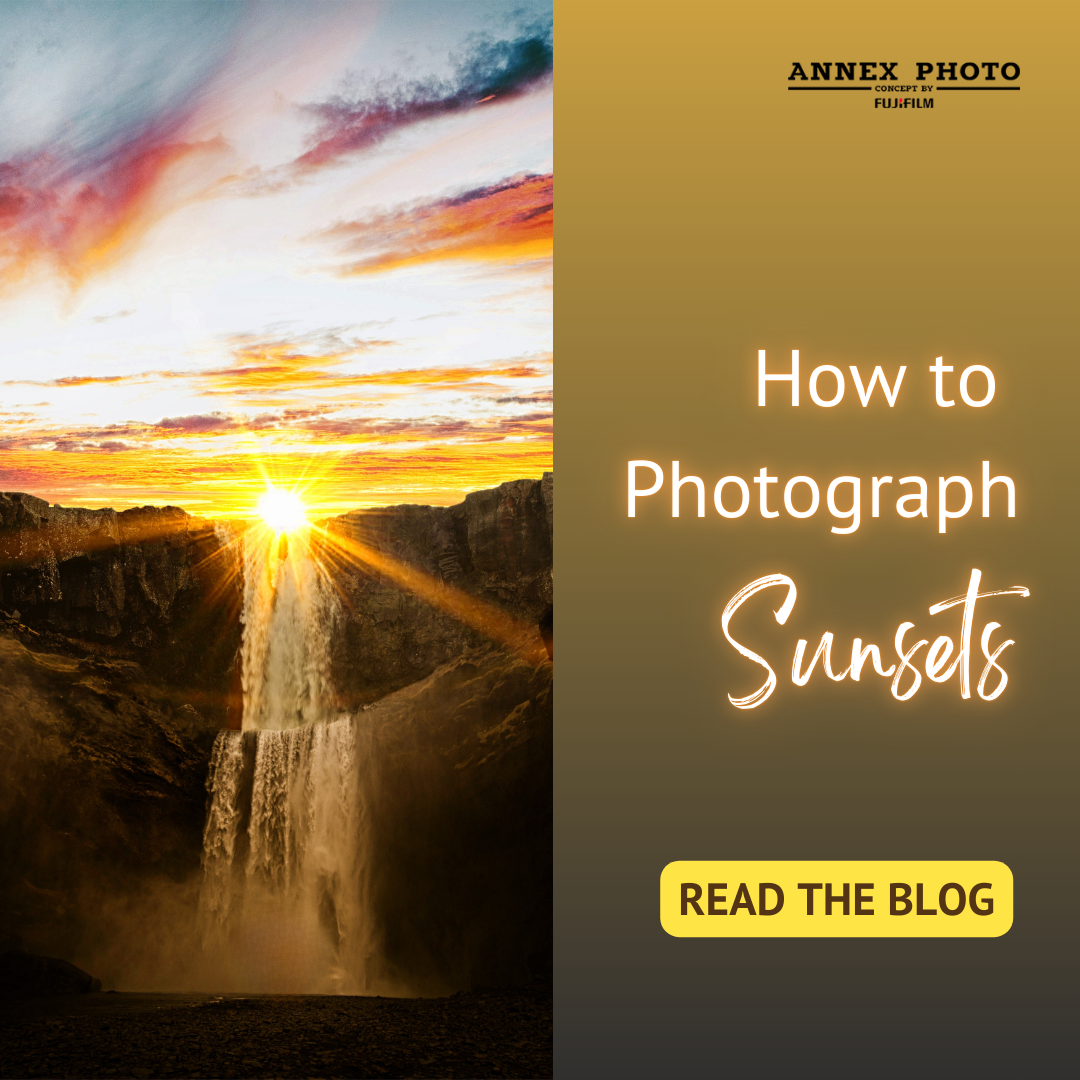All Blog Tags
What Does It Mean to Have a Photographic Style?
In a world where more photos are being shared than ever before, it can be difficult to make your photos stand out. With the growing popularity of feed-based social media platforms like Instagram and TikTok, it's also becoming increasingly difficult to both create unique content and understand why certain content appeals to you. This can lead to many aspiring creatives feeling overwhelmed by the quality of what others are producing, as well as feeling unsure of where to start in order to achieve the same results.
In photography, the best way to make your photos stand out from the crowd is to develop a signature photography style that is unique to your images. The goal for all photographers should be for people to see a photo of yours and immediately know you took it. This is what separates the amateurs from the professionals and injects your pictures with a personal touch that appeals to the viewer.
This is very simple in theory, but how do you actually develop your own signature photography style?
Get Inspired!
It has been said that nothing is original anymore, and though this is true, it shouldn’t deter people from searching for ways to make their photos represent their individual eye. Though all ideas may not be entirely unique, each person is, and therefore has the ability to reflect that in their images. One good way to kickstart the process of developing your signature photography style is to study the work of those who inspire you. If you aren’t familiar with what's been done before, it's extremely difficult to bring something new to the table. These sources of inspiration can range from photography greats like Henri Cartier Bresson and Ansel Adams to an Instagram account that you discovered that you really enjoy the look of.
The important thing is that you discover what kind of images inspire you to take photos yourself and try to convey that feeling in your own work. Every great photographer looks up to someone that came before them and began their journey by imitating the work of those who inspired them. Everyone is a copycat at first. Those who succeed in developing their own signature photography style study their craft and go beyond imitation and create something that's different from what their peers are making. However, this can’t be done without first understanding what styles of photos appeal to your creative self.
Subject Matter
Before you can stand out from the crowd, you must decide what crowd you're in. While you by no means need to limit yourself to one aspect or type of photography, you need to be able to have continuity between your photos, making it easier for viewers to identify a photo of yours from any of the other millions. One great way to establish continuity is through subject matter. It goes without saying that a photo is nothing without the subject, and the same goes for a photographer's signature style. A compelling subject will always be the most important part of an image and deciding what is compelling is entirely up to the person behind the camera.
In order to discover the subject matter that appeals to you the most, ask yourself three questions:
1. What interests me photographically?
It could be the forest, or your friends skateboarding, or fashion advertisements. It's important to establish a starting point to begin working from. It is difficult to develop any sort of style to your photos if you are constantly changing your subject matter. So stay committed to what interests you the most, at least in the early stages of your photographic journey.
2. What do you want your photographs to say?
Successful photos do more than just look nice, they have meaning behind them. Though some images may seem fairly surface level, all great photographers have the ability to speak through their images. What may seem like a basic shot of a mountain line or a tree can be transformed by the right photographer shooting with intended meaning. This means adjusting the aspects that are in the photographer's control to convey a message, emotion, idea, or atmosphere to the viewer. Anybody can take a photo and manufacture an elaborate meaning or story behind it. However, those that shoot with intent, can communicate with the viewer without the need for words.
3. Why is taking photos important to you?
Being able to understand what subjects you are drawn to and why is a fundamental part of developing a personal photography style. If you don’t understand why it is important to you to take a photograph, then you won’t be able to differentiate between subjects or convey any kind of meaning. Your answer to this question should change as you grow as a photographer. What interests you initially, most likely won't later as your skill level grows and you continue to understand what makes your eye different from other photographers.
Method
Understanding your photographic interests and choosing compelling subject matter may sound straightforward, but you must have the technical ability to take a strong photograph for any of that to matter. All the intent in the world can’t make up for a poorly exposed image or a cluttered composition. Mastering the basics is essential for your signature photography style to take shape and translate to the viewer.
Understanding the behaviour of the sun during certain hours of the day, knowing how to adjust the aperture on your camera to change the depth of field of your images, freezing and blurring motion to achieve desired effects: these skills are crucial to establish a photographic identity.
If you don’t know how to use your camera, how can you expect to create a great image? This requires experimentation.
Trial and error is important at any stage in a photographer's journey as it allows you to push yourself outside of your comfort zone and narrow down the wide-ranging possibilities of photography to the niches that interest you the most. Shooting film or digital, black & white or colour photography, or long exposures or freezing action shots are all examples of subject and technique choices that can only be made through experimentation. These technique decisions reflect the personality and voice of the photographer and help to forge consistent themes and similarities between your images.
Editing/Post Processing
One main way that many photographers stand out in today's media climate is to focus on the postproduction of their images. This entails using editing software (Adobe Lightroom, Adobe Photoshop, etc.), different printing methods, or cropping in order to reinforce the look and feel of your images. In today’s photography environment, it is as easy as downloading an app on your phone to transform your photos into masterpieces. Lightroom and Photoshop are the most common photo editing computer software and many photographers use these programs to adjust the levels (exposure, contrast, shadow detail, etc.) of their photos to match the vision they had while taking the image.
There are many photography purists in the world that aren’t interested in heavily editing their photographs as they see it as a sign of a weak photographer that can’t get the results they want out of the camera. While this is a fine perspective to hold, it does ignore the fact that mostly every great photo in history was most likely edited in some way shape or form. In the days of film photography, editing was done in the darkroom. Photographers would manipulate the lighting and contrast of their photos by covering and exposing areas of the image to light during the printing process to edit their work in a process called “dodging and burning”. Nowadays, the computer is the darkroom for most photographers, and it’s important to learn how to use all the tools at your disposal as a beginner in photography. How you choose to edit or not edit your photos… all that matters is that you feel confident that your final product reflects your initial vision.
Cropping has always been an important facet of photographic postproduction as well. Deciding what elements of a photo are essential and what aren’t is the mark of a photographer who is secure in their vision. Whether it's used to isolate a certain subject, remove distractions from the frame or for stylistic reasons, cropping can transform mundane images into great dynamic photos. With the high resolution of modern digital cameras, it's easier than ever to crop into your photos to achieve the precise look you imagined. Your approach to editing will surely change as you develop and understand the look you want your photos to have, and this can only truly be achieved by trying new things but also developing a consistent style. Stay focused on what elements of the photographic process you enjoy, but don’t be afraid to break some eggs in the process and try new things!
Your Signature Photography Style Take Shape
Developing your own photographic style is not easy. It requires going against the grain of prevailing trends in photography and adding or removing elements to your work that make it unmistakably yours. Achieving this understanding comes very quickly to some and for others it's a more gradual process, and both are completely fine. Be confident in your vision and don’t place too much value in the opinions of others, especially when you are experimenting with different techniques and subjects. Be critical of your own work but don’t be too hard on yourself, great photographers became great because they dedicated their life to the craft and followed their instincts.
Follow what inspires you, whether that's an artist, a photographer, or a feeling that you connect with, let it inform your photos. Choose interesting subject matter that you enjoy photographing and think of ways to shoot it that differ from the norm- be bold! Be a student of photography and do your best to master the basics of lighting and camera settings so you can focus more of your energy on what you want your photos to evoke. Finally, use the limitless potential of editing to bring your images to life, while also developing a visual style that’s consistent with your other work. Photographic style is about letting your personality show through your images in a way that connects with the viewer. So, take the photos that you want to take and have fun with it!
If you want more expert advice about developing your signature photography style, contact the photography enthusiasts at Annex Photo.
Share
Most Recent Posts








